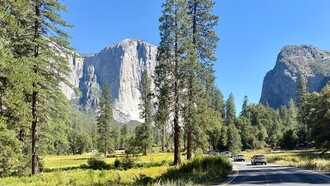In India, we are all aware of “Brain Drain” – a phenomenon that is associated with meritorious students from IITs and IIMs migrating to the Western world in search of a better life particularly in the domain of Information Technology (IT). However, there is a new kind of migration, “Brawn Drain”, that countries like India are staring at. Whether one likes it or not, the migration and diminution of raw athletic and sports talent from India to other countries have been in vogue for several decades now.
Niko Besnier and Susan Brownell, two renowned anthropologists in their path-breaking research work on the culture, politics, economics and more behind the 2016 Rio Summer Olympic Games are of the opinion that: “In today’s globalized society, many athletes playing for national teams are citizens of the world more than of a single country”. Furthermore, they opine that while many people get caught up in the nationalistic pageantry of the opening ceremony, the reality of the international sports world today is one of increasing fluid citizenship among athletes.
According to the Anthropologist duo Niko and Susan, in the last few years, cash-rich Gulf countries have been luring athletes from other countries by offering them not just money but also world-class training facilities alongside the possibility of qualifying for the Olympics.
Transnational Mobility
Qatar, for instance, has made huge investments in the sports arena and the government approved a liberal citizenship policy for the athletes and their families. It may be recalled that Qatar’s Handball team, a finalist at the men’s 2015 World Handball Championship, had just four native Qatari citizens in a a17-person troop, and in the Rio Olympic Games, Qatar had more than half of the athletes who were from another country.
The issue of transnational mobility is a sensitive one and often questions why athletes and sporting talents should have an easier path to citizenship than other immigrants! Others paint a picture that athletes as such are greedy who have betrayed their motherland.
The government of India’s Ministry of Tourism has set for itself the goal of becoming the world’s third-largest tourism economy by 2028, which in itself will be a magnificent achievement by any count. But, is India ready to offer opportunities that allow talent to work on new, exciting and innovative projects?
The case of Ang Tshering Lama – Nepal’s iconic mountaineer
Nepal’s iconic mountaineer Ang Tshering Lama who has summitted Mt. Everest multiple times and holds to his credit the mantle of conducting the world’s highest rescue mission on Mt. Everest in the year 2017 is a case I want to highlight and draw the attention of the mandarins of India’s Tourism industry.
I have known Ang since my childhood days in India’s remote North-Eastern state of Assam. We grew up together in a boarding school – (Carmel Residential School) in the quaint Assamese town of Tezpur.
It is a fact that India’s North East is a cradle of sporting talents due largely to the region’s belief that physical education is an integral part of the overall development of the youth.
Unlike mainland India, where sports and games are treated as “waste of time/distraction from studies”, India’s North-East comes as a breath of fresh air as the number of world champions like Mary Kom, Baichung Bhutia, Dipa Karmakar, Hima Das and others of their ilk who have stamped their authority on the global stage amply illustrate. What can be more authentic than figures -7% of India’s contingent to the 2016 Rio Olympic Games were from India’s Marlboro land, North East.
Ang was a raw talent right from his childhood. Mountaineering was his passion, which isn’t surprising as he himself is a proud Sherpa. My question is: the Himalayas pass through India’s North-East as well through Arunachal Pradesh, Assam, Manipur, Mizoram, Nagaland and Sikkim? Why is there no Mountaineering Institute of repute set up in the region? As of now, just three exist – Darjeeling, Dirang and the one at Sikkim, which to my mind is still not enough given the colossal stretch of the Eastern Himalayas.
Another significant fact is that the North East of India being India’s un-official “Sports Capital”, has the Government of India through its departments like the Ministry of Tourism and the Ministry of Defence done enough to tap raw, young talents from the region and help their families to come out of poverty through outdoor activities like mountaineering, paragliding, hang gliding, kayaking, river rafting and other outdoor tourism avenues that are now on the radar of the discerning world traveler?
Ang was born in India. He had the right mix of talent and agility, the right mindset to succeed in the great outdoors and was blessed with a great physique... And, yet he had to leave India!
From the day he set foot on Nepalese soil, his life took on a different turn. Nepal’s burgeoning tourism industry, good mountain tourism infrastructure and a tourist-friendly government meant that the sky was the limit for Ang Tshering Lama. Today, after two decades of intensive mountaineering in the Himalayas and summiting some of the highest peaks in the world has brought him worldwide fame and admiration.
Ang’s meteoric rise as one of the world’s rare breed of classical climbers is best fathomed through this immortal quote of Edward Whymper, who more than a century had said:
Climb if you will, but remember that courage and strength are naught without prudence and that a momentary negligence may destroy the happiness of a lifetime. Do nothing in haste; look well to each step, and from the beginning think what may be the end.
(Edward Whymper, Scrambles Amongst the Alps)
To sum up, India’s loss was Nepal’s gain. India failed to tap a genius mountaineer.
Conclusion
In the hindsight, there is still time for India’s tourism industry to set things right. The tourism sector in India is still underutilized. This is one industry that relies heavily on the availability of infrastructure, accommodation, transportation, hospitality, governance, visa policy and other ancillary facilities which the government has to ensure for tourism to blossom.
As the phenomenon of tourism diversifies, new avenues for employment are opening up. Alternate accommodations and immersive experiences are what today’s discerning travelers expect from their India visit.
Long back in April 1966, Ashoka Madgavkar had expressed his views on the future of mountain tourism in the Himalayas thus:
I would emphasize that Indian mountaineering can only grow to its full stature if it accords with the national genius, striking its roots deep within what Jung terms our collective unconscious to draw upon a real source of strength. It is in accordance with our tradition of freedom and simplicity that we must try to bring out the best both in the climbers and in the guides who together form our mountain world.















